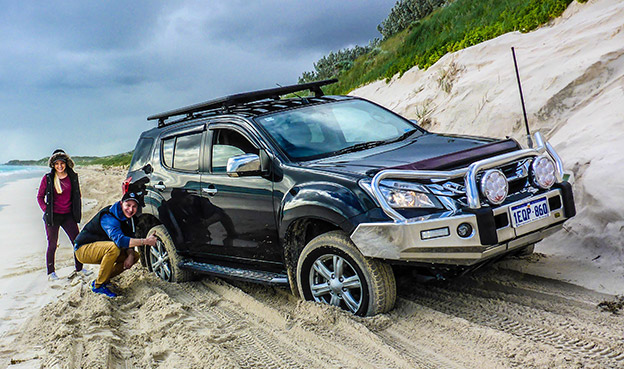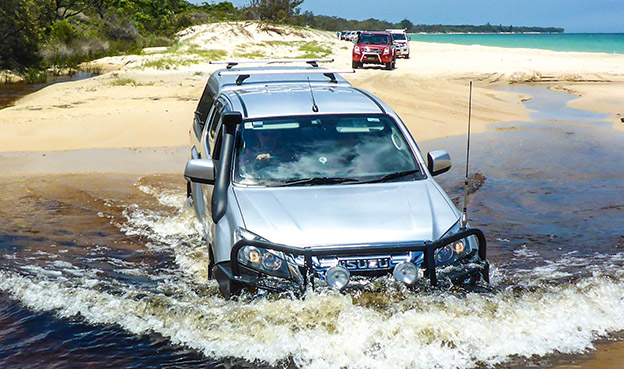

As far as job titles go, 'Chief Engineer at Isuzu Motors Limited's PT Product Planning & Engineering Dept. 2' is hardly succinct, but Iwao Sasaki isn't one for cutting corners. While his remit is simple—build the world's best commonrail diesel engines—his job is immensely technical. Thankfully, Sasaki-san is happy to translate the complex day-to-day process of developing a new engine into layman's terms. Here, live from Japan, he explains Isuzu's engine methodology, the challenges of unreliable fuel in less-regulated countries and exactly why chipping your engine might not be the best idea.
When creating the ECU software for a new common-rail diesel (CRD) 4WD, how does Isuzu determine the perfect balance between power and reliability?
Isuzu engines are engineered to produce an understated power and torque output to create a de-stressed environment, therefore reducing engine wear and promoting component longevity. The reliability is determined by creating the optimum fuel/air mixture and ensuring that the heat generated by the combustion process is constant and also dissipated uniformly.
Isuzu engine design efforts are aimed at generating maximum torque at low engine speeds—under 2000 rpm—because at those speeds fuel consumption is at its most economical and the engine's response characteristics are perceived as positive; ie, it has good 'pulling power'.
On average, what's involved in the development of a new engine?
Diesel engine development is a constant evolution, so it's impossible to put a single time frame on any particular engine. That said, the latest generation of the 4JJ1 diesel engine that powers the D-MAX and MU-X was rigorously tested over approximately four million kilometres! Isuzu is working tirelessly to further improve its diesel engines to produce higher output and durability, while maintaining class-leading thermal efficiency among 3-litre diesel engines. At the same time, the company is pouring its energies into clean diesel engine R&D with the aim of reducing emissions of particulate matter (PM) and nitrogen oxides (NOx).

"THE 4JJ1 DIESEL ENGINE THAT POWERS THE D-MAX AND MU-X WAS RIGOROUSLY TESTED OVER APPROXIMATELY FOUR MILLION KILOMETRES"
Is it true that manufacturers have only one engine control unit map that caters to all countries and all fuel qualities, or are vehicles delivered to specific regions or countries with differing programming?
No—countries have differing emission standards, and so Isuzu has differing standards to comply with the local regulations and to help assist with inferior fuel qualities found in some countries or regions around the world.
What steps has Isuzu taken to ensure the reliability of its engines/fuel systems/turbos that other manufacturers might not?The 4JJ1 has a scissor gear (split design) camshaft drive gear, which eliminates backlash on deceleration and results in reduced wear. Our engines' connecting rods have large big-end bearings, making them stronger and therefore last longer. And we use robust cast roller rocker arms with larger roller bearings, plus roller pivot bearings, reducing friction and making them longer wearing—some manufacturers use pressed metal roller rockers with small roller bearings and no pivot bearings, while other manufacturers use no rockers at all.
Are some components in a CRD engine worked harder than if it was a traditional mechanically injected diesel?Yes—to begin with, the fuel system has to deal with 26,000psi injection pressure! The resulting combustion process subjects the pistons, connecting rods and crankshaft to significant dynamic forces due to the more efficient combustion.

The use of poor quality fuel will have a negative effect on a CRD fuel system— regardless of the manufacturer. The fuel filter and water separator is unable to remove all traces of water, especially once the fuel and water mixture becomes emulsified. Having said that, Isuzu built its engine to be as durable as possible againstsuch damage. First, by adopting a fuel filter that has the class-leading filtration efficiency and the function to separate the water. Secondly, with a filter that has a built-in, water-level-sensor-based alarm system. Moreover, the fuel injector is arranged to be durable with a special coating made for the interior parts, which protects against foreign substances.
If an owner modifies their engine, will it void their engine warranty?Simply put, yes. Manufacturers have no data to support what, if any, impact such modifications will have on an engine. Isuzu spends considerable resources to ensure our engines provide optimum power and performance, as well as producing the best possible fuel economy, while still meeting the necessary emission regulations.
Many diesel chip suppliers claim their chip "will not void your warranty" because it doesn't override the engine's factory safety parameters. Is this true?No—it is not driven by a "factory safety parameter". Any modification of the engine control and emission components would be a contravention of most manufacturers' warranty conditions, and therefore such practice is not recommended.





